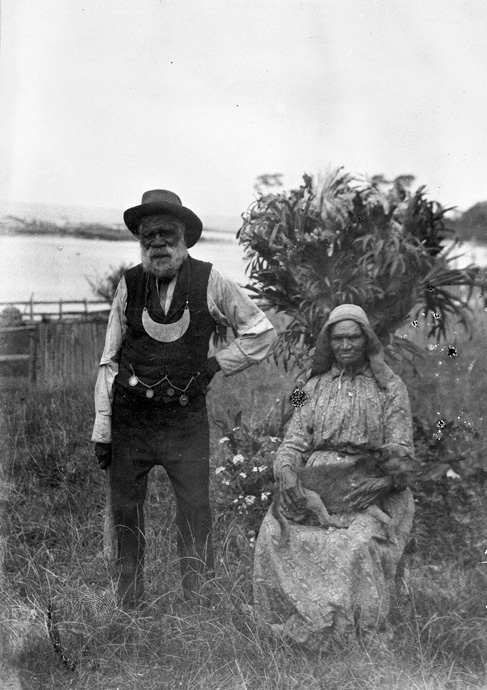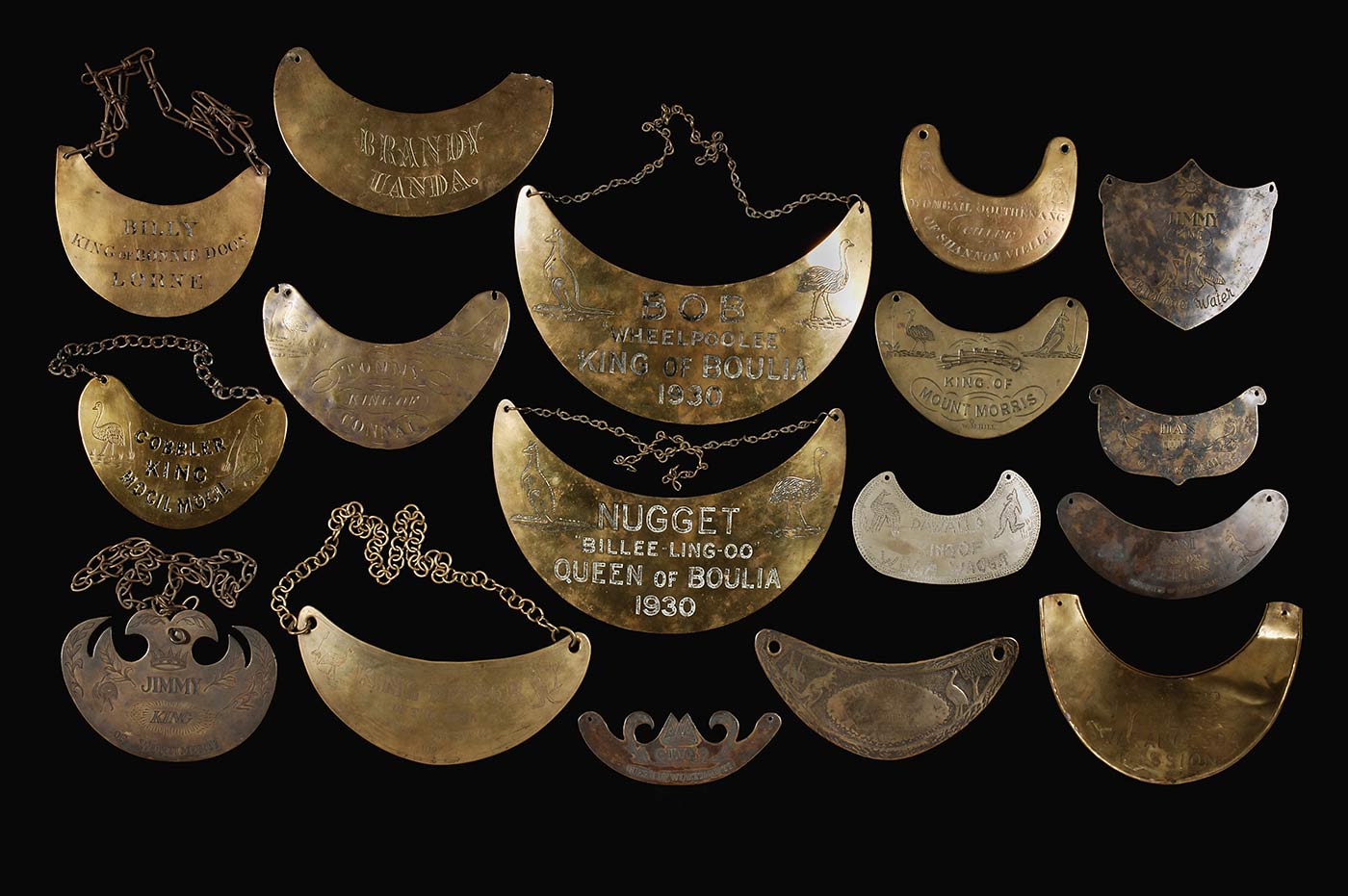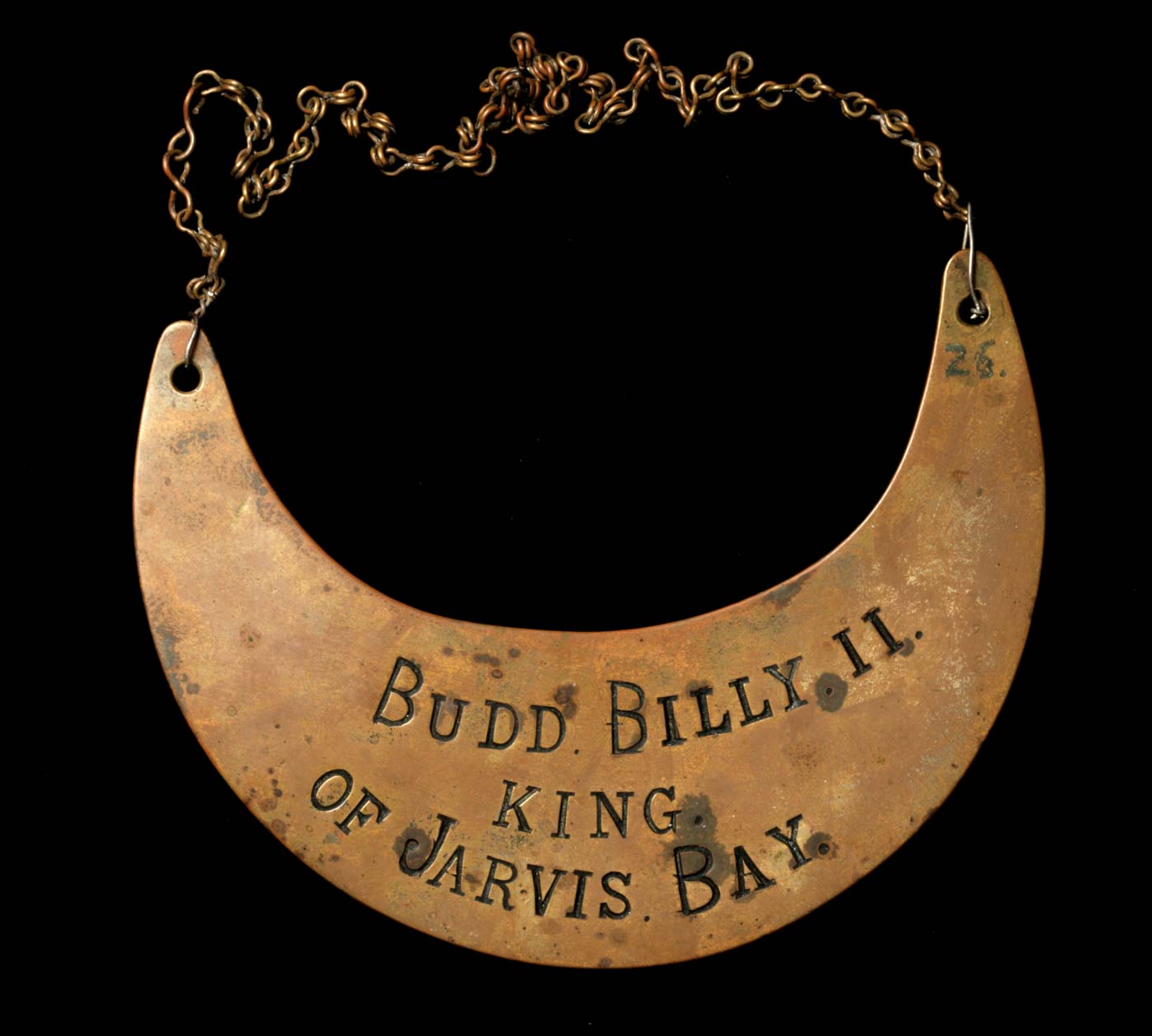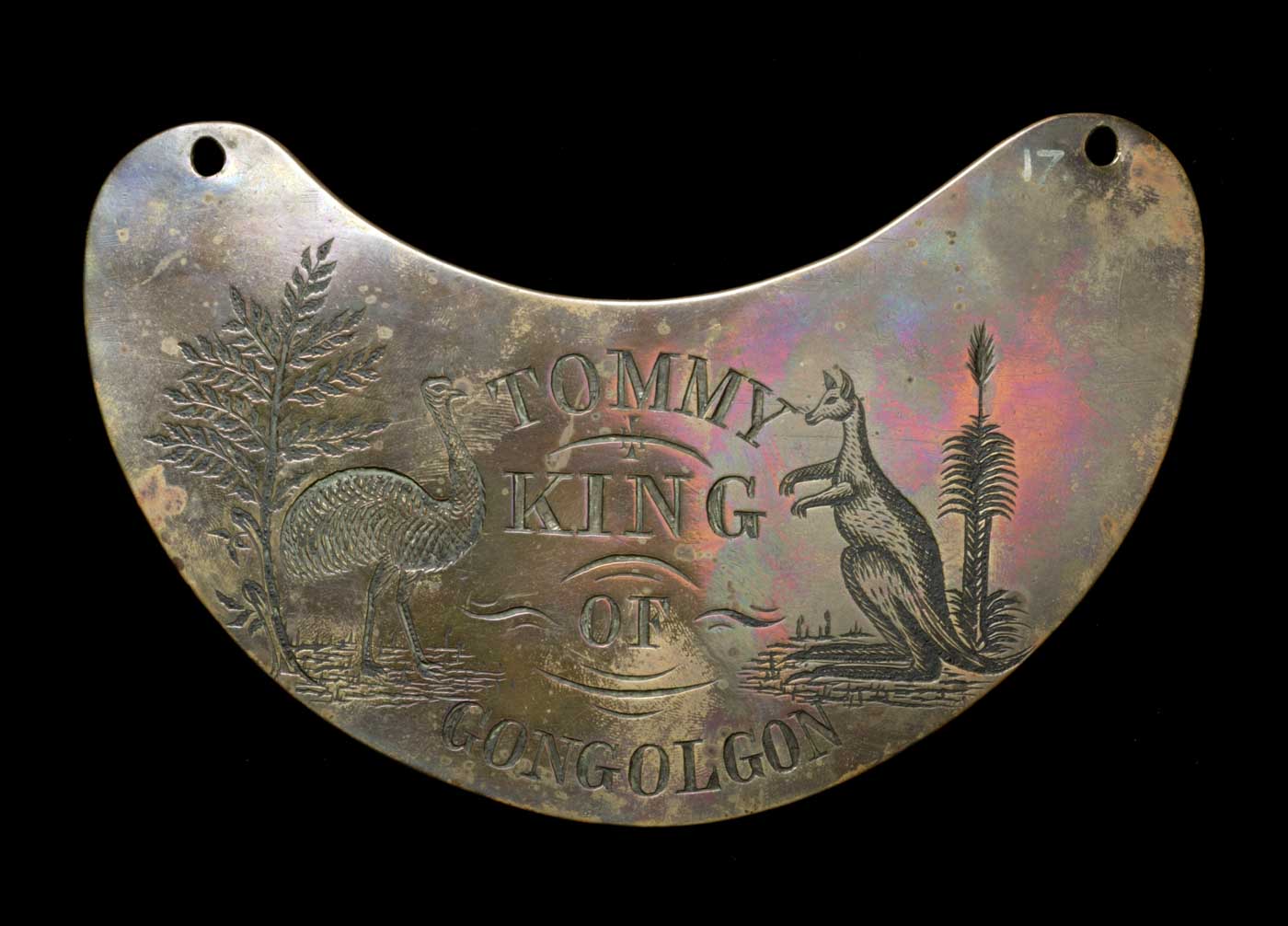By curator David Kaus, 2017
Breastplates were a form of reward given to Aboriginal people. These mainly crescent-shaped plates — sometimes called ‘king’ or ‘brass’ plates or gorgets — are one of few cross-cultural historical objects from colonial Australia to survive into the 21st century in any number.
There are more than 300 breastplates in public collections in Australia, with the largest at the National Museum, and many more in private ownership.
Aboriginal views
Aboriginal people view breastplates today with reactions from utter scorn, to pleasure at having a tangible object linked to an ancestor or community. Earlier Aboriginal views about breastplates are difficult to evaluate because little was recorded.
We know there were cases where people presented with breastplates were not entitled to exercise the authority that went along with it, and that this contributed to the breakdown of social structures. Other people used breastplates to their advantage, as evidence of their past services. Some breastplates wore worn lots, illustrated by wear around the holes where the chain was attached.
History of breastplates
Lachlan Macquarie, Governor of New South Wales from 1814, was trying to have some kind of working relationship with the Aborigines where they could coexist in harmony. The history of settlement up to that point had been dotted with conflict where lives had been lost on both sides.
Macquarie developed strategies to bring about peaceful relations between the two groups, rewarding friendly Aboriginal people but treating harshly those who defied the invasion of their lands, often sending out the military to capture or kill known ‘offenders’. Two years and several military campaigns later, the peace Macquarie sought was achieved.
The strategy with the most lasting impact was the establishment of a ‘chieftainship’ system. Aboriginal groups have democratic systems based around consensus decision-making by a group of elders, but Macquarie wanted a system where each ‘tribe’ had a chief who would settle internal matters and would be the intermediary between his ‘tribe’ and the government.

These chiefs were presented with a brass ‘badge of distinction’ engraved with their name and tribe, clearly identifying them and their status.
It is most likely breastplates have their origin in armour worn by soldiers long ago, as the ‘gorget’, often engraved, worn to protect the throat.
Macquarie had a two-tiered system of breastplates — one for the ‘chiefs’ and the other, termed ‘badges of merit’, for people who assisted the colonists but who were not chiefs.
After Macquarie returned to England in 1822, it became much more frequent for settlers and others to present breastplates and by 1850 it was common. When the last known breastplate was presented in 1946, hundreds, if not thousands, had been handed out.
They were presented for various reasons, including as rewards for saving the lives of non-Indigenous people, for faithful service and to recognise stockmen and trackers.
Designs and inscriptions
Throughout their history, breastplates remained crescent-shaped with only rare exceptions. Some featured decoration in addition to the inscription.
Many early breastplates were engraved using the same conventions that applied to European heraldry, particularly coats of arms. You will sometimes see kangaroos and emus, for example, with their heads turned looking over their shoulders — a common heraldic feature known as ‘regardant’. Kangaroos and emus are by far the most common motifs.
Other Australian animals found on breastplates include platypuses, lyrebirds, lizards and snakes. Grass and grasstrees are the most common plants. Other common motifs include Aboriginal people, sprigs, weapons and coronets.
Some are finely made and exquisite pieces of metalwork while others were crudely cut from sheets of metal and the wording stamped or punched. Most were made from brass, though copper and bronze were sometimes used.
One was made from solid silver, another was silver plated and presented to a stockman around the early 1850s, with a finely executed tableau depicting a stockman on a horse chasing cattle. One, from Arnhem Land in 1921, is made from turtle shell.
Several breastplates are on show in the Museum's First Australians gallery.
If you have suggestions, comments, images, annotations or corrections about breastplates in the Museum's collection, contact us using the feedback form.


